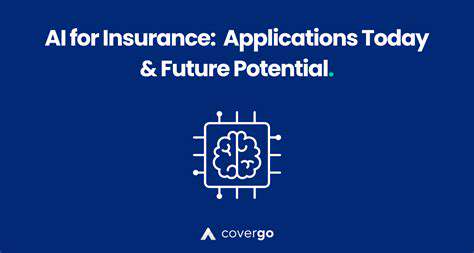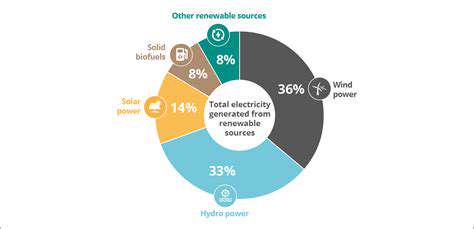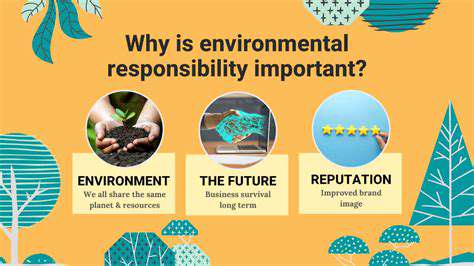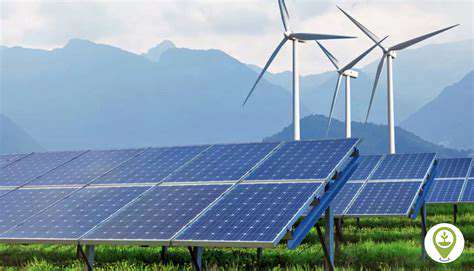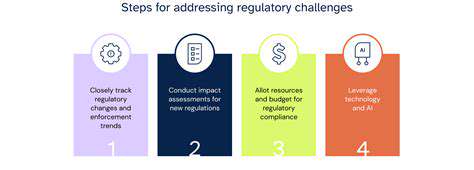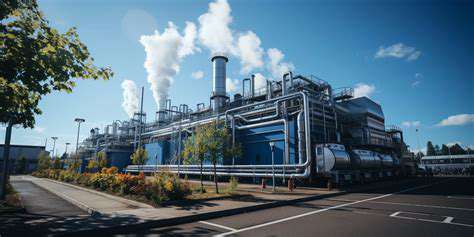Decentralization of Energy Generation in Smart Cities: Urban Energy Solutions
The traditional centralized energy model, where power plants generate electricity and transmit it across vast grids, is undergoing a significant transformation. Distributed energy resources (DERs) are emerging as a key component of this shift, decentralizing energy generation and bringing it closer to consumers. This fundamental change in the energy sector offers a multitude of benefits, impacting everything from grid stability to energy affordability and environmental sustainability.
This shift towards distributed generation is driven by a combination of factors, including technological advancements, environmental concerns, and the desire for greater energy independence. The increasing availability of affordable and efficient renewable energy technologies, such as solar panels and wind turbines, plays a crucial role in this transition.
The Role of Renewables in Distributed Energy
Renewable energy sources are at the forefront of the distributed energy revolution. Solar photovoltaic (PV) systems, for instance, are rapidly becoming more accessible and cost-effective, allowing homeowners and businesses to generate their own electricity from sunlight. Wind turbines, while often associated with larger-scale projects, can also be deployed in smaller capacities to contribute to distributed energy grids.
The integration of these renewable sources into existing energy infrastructure is crucial. Smart grids, equipped with advanced monitoring and control systems, are essential for managing the fluctuating nature of renewable energy production and ensuring grid stability.
Economic Advantages of Decentralization
Distributed energy systems offer numerous economic advantages for consumers. By generating their own electricity, individuals and businesses can potentially reduce their energy bills, lower their carbon footprint, and enhance their resilience in the face of potential grid disruptions. This increased energy independence is a major driver for the adoption of DERs, and it can lead to significant savings over time.
Furthermore, the development and deployment of DERs creates new economic opportunities for businesses involved in manufacturing, installation, and maintenance of these technologies. This can stimulate job growth and local economic development in communities throughout the country.
Grid Modernization and Integration
The integration of distributed energy resources into existing power grids requires significant modernization efforts. Smart grids, with their advanced sensors, communication networks, and control systems, play a critical role in managing the flow of electricity from various sources, ensuring reliability and efficiency. The ability to effectively integrate intermittent renewable energy sources is a key challenge.
Grid operators need to adapt to the changing landscape of energy production and consumption, fostering a more dynamic and responsive energy system. This includes developing new algorithms and protocols to manage fluctuating energy generation and consumption patterns.
Environmental Benefits and Sustainability
The shift towards distributed energy resources offers substantial environmental benefits. By reducing reliance on large-scale power plants, we decrease greenhouse gas emissions and improve air quality. The use of renewable energy sources in DERs significantly contributes to a more sustainable energy future, mitigating the effects of climate change. This is a crucial factor in the ongoing global effort to reduce our environmental impact.
Technological Advancements and Innovations
Technological advancements are continually driving the evolution of distributed energy resources. Improvements in battery storage technologies are making it possible to store excess renewable energy for later use, smoothing out the fluctuations in supply. This advancement is crucial for increasing the reliability and efficiency of DERs. Further innovations in energy storage and management systems will be key to unlocking the full potential of decentralized energy.
Advanced sensors and control systems are enabling better integration of DERs into the grid, optimizing energy flow and enhancing grid stability. These technologies are making distributed energy systems more reliable, efficient, and cost-effective.
Optimizing Energy Consumption through Smart Grids
Harnessing Decentralized Generation
Decentralized energy generation, a cornerstone of modern smart grids, involves distributing power production across various locations, from individual homes to community microgrids. This approach fosters resilience, reducing reliance on centralized, often vulnerable, power plants. By dispersing generation, we mitigate risks associated with single points of failure, enhancing overall system reliability and lowering vulnerability to extreme weather events or cyberattacks.
This distributed nature of energy production empowers communities to become more self-sufficient, contributing to greater energy independence and potentially lowering overall energy costs by reducing transmission losses and promoting local control over energy resources.
Integrating Renewable Energy Sources
Smart grids are uniquely positioned to seamlessly integrate renewable energy sources like solar and wind power into the existing energy infrastructure. The dynamic nature of these renewable sources necessitates sophisticated grid management systems that can adjust to fluctuating power output. This integration requires advanced forecasting and control mechanisms, enabling the grid to efficiently manage the intermittent nature of renewable energy production.
The ability to accurately predict and respond to these fluctuations is critical for maintaining grid stability and reliability. This integration is vital for achieving widespread adoption of renewables and transitioning towards a sustainable energy future.
Enhanced Grid Efficiency and Reliability
Smart grids leverage data analytics and advanced communication technologies to optimize energy flow, minimizing transmission losses and improving overall grid efficiency. Real-time monitoring and control systems allow for proactive identification and resolution of potential grid issues, significantly enhancing reliability and reducing the likelihood of outages.
This increased efficiency translates into cost savings for consumers and utilities, while also promoting a more robust and resilient energy infrastructure capable of adapting to changing demands.
Demand Response and Load Balancing
Smart grids facilitate demand response programs, allowing utilities to incentivize consumers to adjust their energy consumption patterns based on real-time grid conditions. This dynamic response to fluctuating energy demand helps to balance the grid, preventing overload and ensuring stable operation during peak hours. This proactive approach to load management is particularly important for maintaining grid stability when renewable energy sources are heavily integrated.
Advanced Metering Infrastructure (AMI)
Advanced metering infrastructure (AMI) plays a crucial role in smart grids by enabling real-time monitoring of energy consumption patterns. This data-rich environment allows for personalized energy usage insights, enabling consumers to make informed decisions about their energy consumption and potentially reduce their energy bills.
AMI also provides valuable data for utilities, allowing for more accurate load forecasting, improved grid management, and the development of targeted energy efficiency programs. This data-driven approach is essential for optimizing energy distribution and ultimately reducing overall energy consumption.
Advanced Control and Automation
Smart grids leverage advanced control and automation systems to optimize energy distribution, improve grid stability, and reduce operational costs. These systems utilize sophisticated algorithms and machine learning techniques to manage complex interactions within the grid, dynamically adjusting to changing conditions and ensuring reliable power delivery. This sophisticated automation is key to successfully integrating a large number of decentralized energy generation sources.
The ability to dynamically respond to fluctuations in supply and demand ensures the stability and reliability of the entire energy system. This advanced control is essential for achieving the full potential of decentralized energy generation.
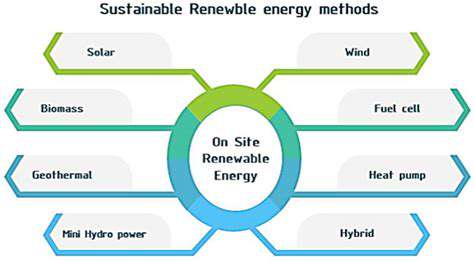
While offering substantial benefits, digital twin adoption presents several implementation hurdles. Data governance represents a critical concern, requiring robust cybersecurity measures to protect operational technology systems from emerging threats. The integration of legacy equipment with modern IoT platforms often necessitates intermediary solutions and protocol converters.
Community Microgrids: Enhancing Resiliency and Reliability
Distributed Generation and Control
Community microgrids leverage distributed generation sources, such as solar panels, wind turbines, and small-scale hydropower, to provide localized power generation. This decentralized approach enhances the resilience of the energy system by reducing reliance on a single, centralized power source. Diversifying energy generation sources can significantly mitigate the impact of outages affecting the larger grid, ensuring a more stable and reliable power supply for the community. Moreover, these distributed generation technologies can be integrated with energy storage systems, further bolstering the reliability and stability of the microgrid.
Efficient control systems are crucial for optimizing the performance and reliability of community microgrids. These systems need to dynamically manage the flow of energy from various distributed generation sources and energy storage to maintain grid stability, particularly during peak demand periods. Smart grid technologies play a vital role in this process, enabling real-time monitoring and control of the entire microgrid infrastructure, improving overall system efficiency and reliability.
Grid Integration and Interconnection
Careful planning and design are necessary to seamlessly integrate community microgrids with the existing larger power grid. This integration allows for the exchange of energy between the microgrid and the main grid, providing backup power during outages and potentially contributing excess renewable energy to the grid. Proper grid connection protocols and communication infrastructure are essential for smooth operation and to prevent conflicts with the larger grid's stability.
The interconnection process requires careful consideration of voltage levels, frequency regulation, and grid stability to ensure safe and efficient operation. Effective communication protocols between the microgrid and the main grid are essential for real-time data exchange and coordination, allowing for dynamic adjustments to the energy flow based on changing demands and availability of distributed generation.
Economic Benefits and Incentives
Community microgrids can unlock significant economic benefits by reducing energy costs for residents and businesses through increased energy independence. The use of renewable energy sources can lead to substantial long-term savings on energy bills. Furthermore, the development and operation of these microgrids often create local jobs in areas like maintenance, installation, and management.
Government incentives and policies can play a crucial role in supporting the deployment of community microgrids. Financial incentives, such as tax credits or grants, can encourage investment in these projects. Clear regulatory frameworks and streamlined permitting processes can accelerate the development process and make the implementation of microgrids more accessible.
Environmental Sustainability
Microgrids are intrinsically linked to environmental sustainability. By incorporating renewable energy sources, they significantly reduce reliance on fossil fuels, lowering greenhouse gas emissions and promoting cleaner energy solutions. This transition towards renewable energy sources contributes to mitigating climate change and fostering a greener energy future for the community.
The reduced transmission losses associated with localized energy generation also enhance the environmental benefits of community microgrids. Minimizing energy transmission over long distances reduces the overall carbon footprint associated with electricity production.
Community Engagement and Participation
Community engagement is paramount for the successful implementation and operation of microgrids. Residents should be actively involved in the planning, design, and management of the microgrid to ensure its alignment with community needs and priorities. Transparent communication and participatory decision-making processes are essential to build trust and foster a sense of ownership among community members.
Community microgrids offer a unique opportunity for residents to gain a deeper understanding of energy production and consumption, fostering a sense of collective responsibility for energy sustainability within the community. This fosters greater awareness of the interconnectedness of energy and environmental issues.
Economic and Social Benefits of Decentralization
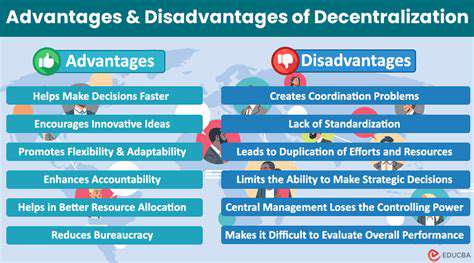
Economic Advantages of De
Decentralization offers significant economic advantages by fostering competition and innovation. By reducing reliance on centralized authorities, decentralized systems can lead to more efficient allocation of resources. This can manifest in lower transaction costs and quicker market responses to changing conditions. Decentralized platforms also have the potential to empower individuals and small businesses, providing them with greater access to capital and markets.
Furthermore, decentralized economies can be more resilient to disruptions. The distributed nature of these systems makes them less vulnerable to single points of failure, such as centralized infrastructure or regulatory changes. This resilience is crucial in today's interconnected world, where global events can have a significant impact on local economies.
Social Impacts of De
Decentralization can have profound social impacts, potentially empowering marginalized communities and fostering greater inclusivity. Decentralized platforms can be designed to be more accessible to individuals in underserved areas, eliminating geographical barriers and enabling participation in global markets. This access can lead to increased economic opportunities and improved living standards for those who have historically been excluded.
Moreover, decentralized systems can promote greater transparency and accountability. By removing intermediaries and central authorities, the decision-making processes become more transparent, allowing users to directly influence the direction of the platform. This can lead to greater public trust and a more equitable distribution of benefits.
Technological Advancements from De
Decentralized systems often drive technological advancements. The need to build secure and efficient decentralized protocols pushes the boundaries of cryptography, data storage, and consensus mechanisms. This constant innovation can create new tools and technologies that benefit society as a whole. These technologies often have far-reaching applications, from supply chain management to secure data storage.
Environmental Considerations of De
The environmental impact of decentralized systems is a complex issue. The energy consumption of certain blockchain technologies is a significant concern. However, ongoing research and development are focused on creating more energy-efficient protocols. This is a critical aspect of the discussion around decentralization, as sustainability must be a core consideration.
Governance and Regulation in De
Effective governance and regulation are crucial for the sustainable development of decentralized systems. The absence of traditional regulatory structures presents challenges in ensuring accountability and preventing misuse. Establishing clear guidelines and frameworks for decentralized platforms is essential to maintain public trust and ensure responsible innovation. International cooperation and collaboration will be important in addressing these challenges effectively.


